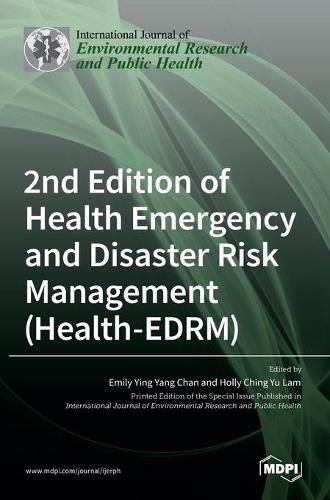Readings Newsletter
Become a Readings Member to make your shopping experience even easier.
Sign in or sign up for free!
You’re not far away from qualifying for FREE standard shipping within Australia
You’ve qualified for FREE standard shipping within Australia
The cart is loading…






This title is printed to order. This book may have been self-published. If so, we cannot guarantee the quality of the content. In the main most books will have gone through the editing process however some may not. We therefore suggest that you be aware of this before ordering this book. If in doubt check either the author or publisher’s details as we are unable to accept any returns unless they are faulty. Please contact us if you have any questions.
Disasters such as earthquakes, cyclones, floods, heat waves, nuclear accidents, and
large-scale pollution incidents take lives and incur major health problems. The majority
of large-scale disasters affect the most vulnerable populations, which often comprise
extreme ages, remote living areas, and endemic poverty, as well as people with low
literacy. Health emergency and disaster risk management (Health-EDRM) refers to the
systematic analysis and management of health risks surrounding emergencies and
disasters, and plays an important role in reducing the hazards and vulnerability along
with extending preparedness, responses, and recovery measures. This concept
encompasses risk analyses and interventions, such as accessible early warning systems,
the timely deployment of relief workers, and the provision of suitable drugs and medical
equipment to decrease the impact of disasters on people before, during, and after an
event (or events). Currently, there is a major gap in the scientific literature regarding
Health-EDRM to facilitate major global policies and initiatives for disaster risk reduction
worldwide.
$9.00 standard shipping within Australia
FREE standard shipping within Australia for orders over $100.00
Express & International shipping calculated at checkout
This title is printed to order. This book may have been self-published. If so, we cannot guarantee the quality of the content. In the main most books will have gone through the editing process however some may not. We therefore suggest that you be aware of this before ordering this book. If in doubt check either the author or publisher’s details as we are unable to accept any returns unless they are faulty. Please contact us if you have any questions.
Disasters such as earthquakes, cyclones, floods, heat waves, nuclear accidents, and
large-scale pollution incidents take lives and incur major health problems. The majority
of large-scale disasters affect the most vulnerable populations, which often comprise
extreme ages, remote living areas, and endemic poverty, as well as people with low
literacy. Health emergency and disaster risk management (Health-EDRM) refers to the
systematic analysis and management of health risks surrounding emergencies and
disasters, and plays an important role in reducing the hazards and vulnerability along
with extending preparedness, responses, and recovery measures. This concept
encompasses risk analyses and interventions, such as accessible early warning systems,
the timely deployment of relief workers, and the provision of suitable drugs and medical
equipment to decrease the impact of disasters on people before, during, and after an
event (or events). Currently, there is a major gap in the scientific literature regarding
Health-EDRM to facilitate major global policies and initiatives for disaster risk reduction
worldwide.